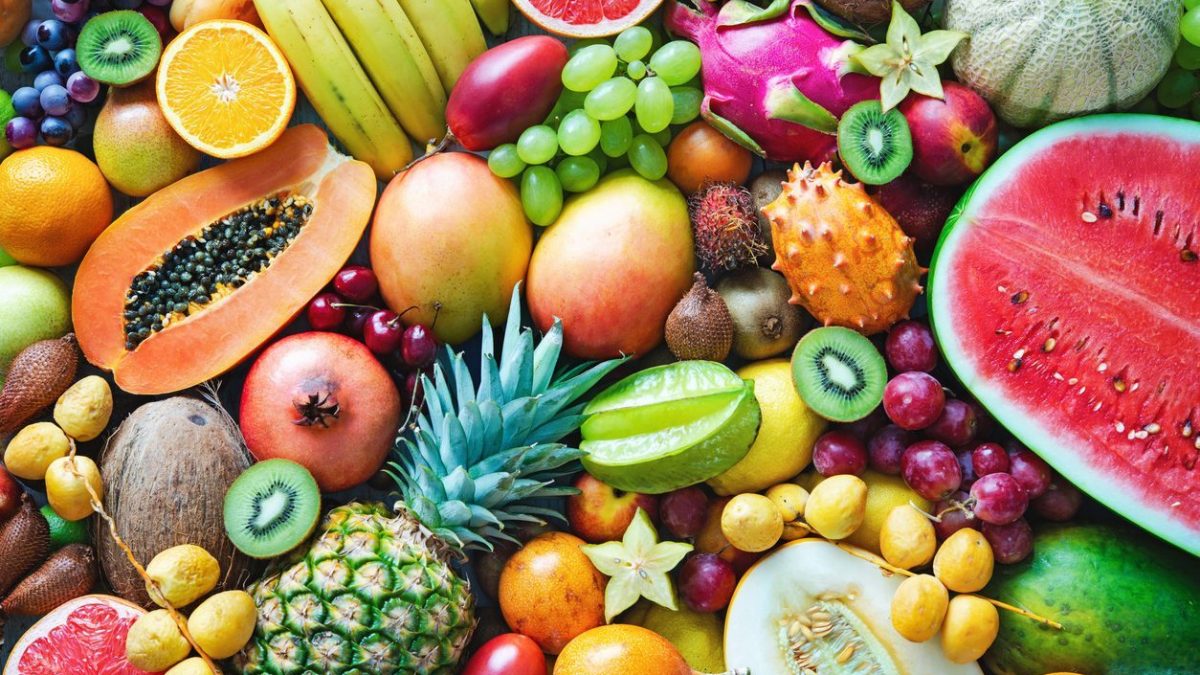
Do you want to try some new flavors, something different from what you're used to? You should read this article because here you'll find a list of the ten most exotic fruits in the world. Smells, aromas, and flavors for a journey that will take you to many countries. Pack your bags and get ready to set sail to discover some fruits we're pretty sure you've never heard of.
1. Buddha's Hand Lemon
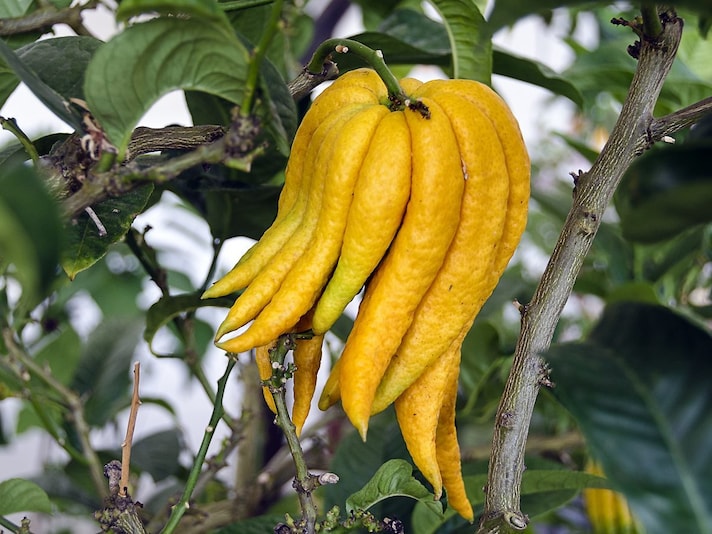
You'll certainly be intrigued by the name, but you should know that we're talking about a particular variety of citron that grows in Asia between China, Japan, and India. It's called Buddha's hand for its tentacle-like shape, resulting from a genetic mutation that prevents the individual segments from growing together. It's one of the strangest and most recognizable fruits in the world and can be used in cooking, although its flavor is very strong, bold, and citrusy. The pith of this particular citron, or white pith, is much less bitter than that of a lemon, and for this reason, its peel is grated to flavor dishes. Like the yuzu, it can be used in sauces, marinades, or even in cosmetics. Being rare and unique, it's very difficult to find in most grocery stores.
2. Monster Fruit (Monstera Deliciosa)
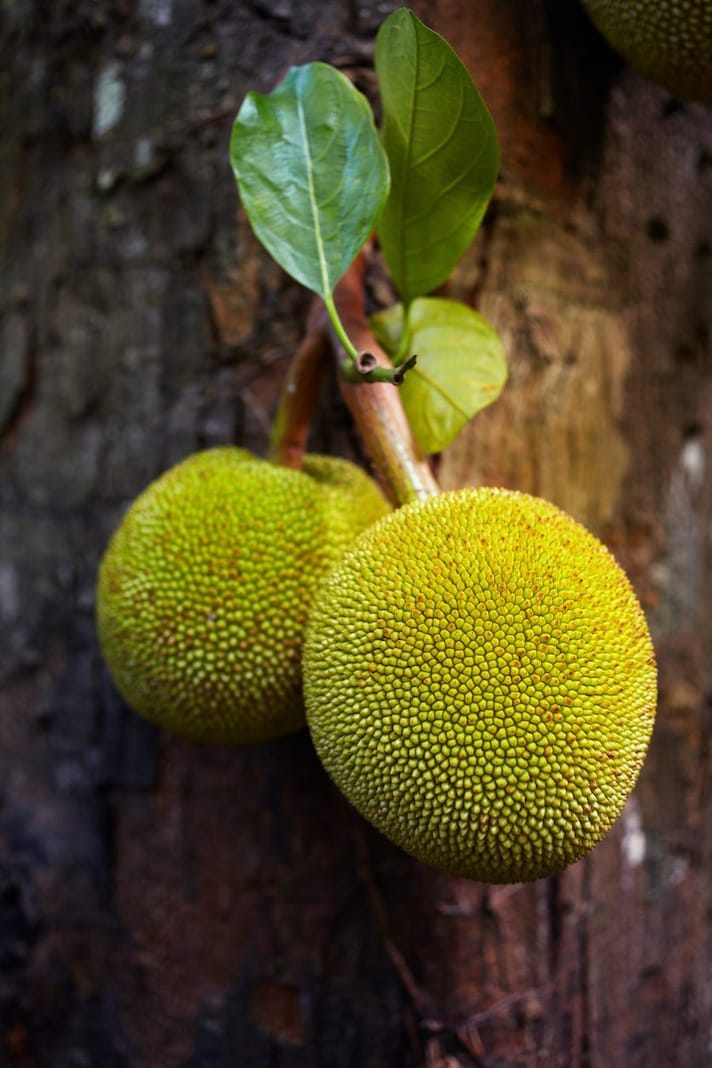
A fruit whose name doesn't bode well for anything. Long and narrow in shape, monster fruit is a tropical plant from the rainforests of North and Latin America, south of Mexico and south of Colombia. Those who have tasted it say its smell is pungent and its flavor is unripe. It should be eaten without the peel and scales, and its flavor is similar to that of pineapple. To use it in cooking, it must be fully ripe so that the scales are easy to remove and the pulp inside becomes whiter and sweeter, making it perfect for fresh fruit salads or smoothies. Like the Buddha's hand lemon and almost all the fruits on this list, monster fruit is not available in regular grocery stores.
3. Jabuticaba
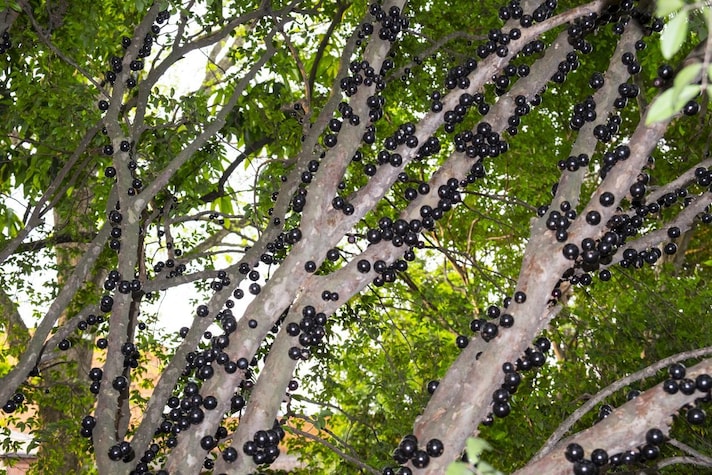
What if we told you this fruit grows directly on the trunk of the plant? Yes, that's exactly how jabuticaba grows. Similar to black grapes, it has many benefits: several studies show how its use in cooking goes hand in hand with traditional medicine. Rich in antioxidants, vitamins C and E, and minerals such as calcium, phosphorus, and iron, jabuticaba is also a perfect fruit for treating ailments such as tonsillitis or speeding recovery from a sore throat. Native to South America, specifically Brazil, it grows on the trunk and branches of the Plinia culiflora tree. Its flavor is sweet and aromatic, reminiscent of grapes or lychees, and it can be eaten fresh or used to make juices, jams, and liqueurs.
4. Sugar Apple (Noi-Na)
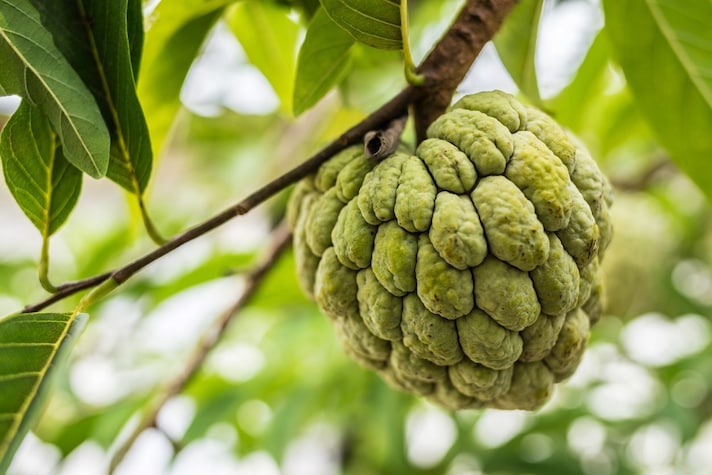
So soft that once fully ripe, it's one of the few fruits that can be halved without a knife. Similar to a green raspberry, the pulp is incredibly sweet and can also be used as a cream filling for various desserts. Native to Thailand, the sugar apple is used in countless recipes in local cuisine or simply enjoyed as a fruit after a meal or as a snack. It has excellent health benefits, including very high levels of vitamins C and B6, which contribute to heart health. Its sweet flavor also makes it particularly popular with diabetics, who can consume it without worries.
5. Durian
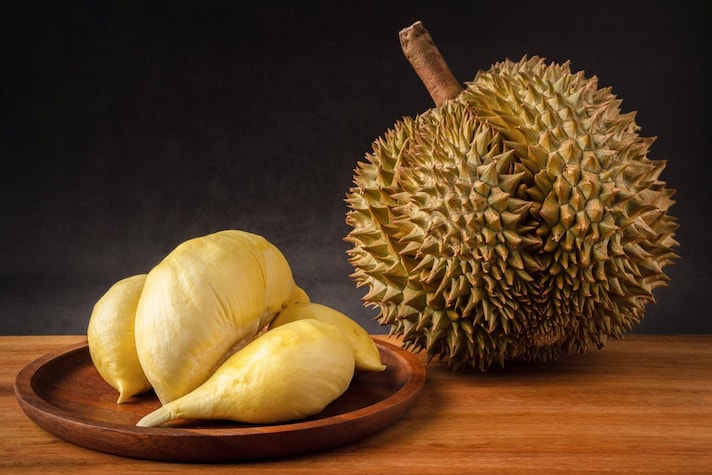
We're sure you've heard of durian. Native to Southeast Asia, it's said to be the smelliest fruit in the world, so much so that it's banned from public transport. Opinions differ regarding its smell—some say it smells like rotten eggs, others say it smells like a mix of sulfur, garlic, and onion. Despite this, in countries like Thailand, Malaysia, and Indonesia, it's considered the king of all fruits. Like its smell, its flavor is also very strong and distinctive, reminiscent of cheese aged for several months. Rich in vitamins, minerals, and fiber, this fruit is characterized by a tough, prickly, pale yellow skin. Also available in exotic markets in the U.S., we recommend anyone wanting to try this Asian delicacy to be prepared when opening the fruit, due to the powerful aromas it releases.
6. Finger Lime (Lemon Caviar)
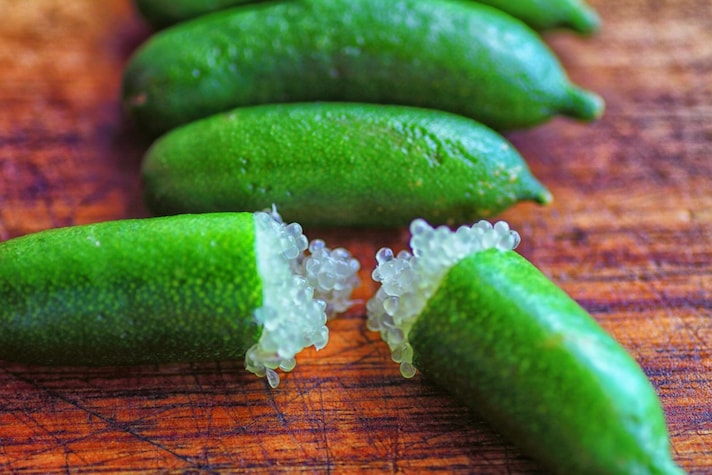
This fruit, also called lemon caviar, is a citrus fruit native to Australia. Its shape is rather bizarre and exotic, resembling a finger with a wrinkled, dark green skin. But why is it called caviar? Simply because the pulp of this fruit is composed of many small seeds, very similar to prized sturgeon eggs but with a pink, white, yellow, orange, or reddish color. The flavor is citrusy, balsamic, and refreshing, with the seeds exploding in the mouth. It's a cross between a lemon and a lime, and for this very reason, it's an excellent pairing with fish dishes.
7. Quandong
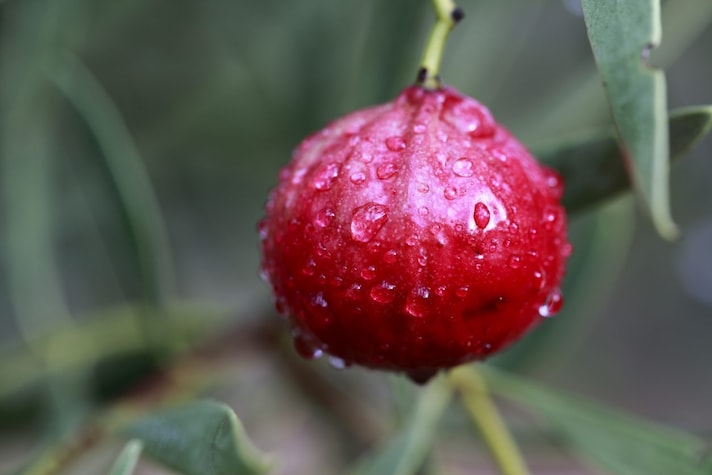
This is one of the other "unexpected" fruits that nature has gifted us. We're talking about the quandong, better known as the Australian desert peach. This ancient plant has fed the Aborigines of Oceania for centuries, as well as being used for medicinal purposes due to its high vitamin C content (twice that of an orange). The most peculiar feature of this fruit is that its seeds are highly flammable because they contain oils that can even be used as fuel by local artisans. Obviously, it's impossible to find in the U.S. as it grows exclusively in the arid Outback (remote, desert areas of Australia). In the country's Aboriginal mythology, it plays a crucial role: during the harvest (which takes place once a year between September and October), important ceremonies are held to celebrate its importance. It is rounded in shape, red in color, a mix between apricot, peach, and rhubarb.
8. Horned Melon (Kiwano)
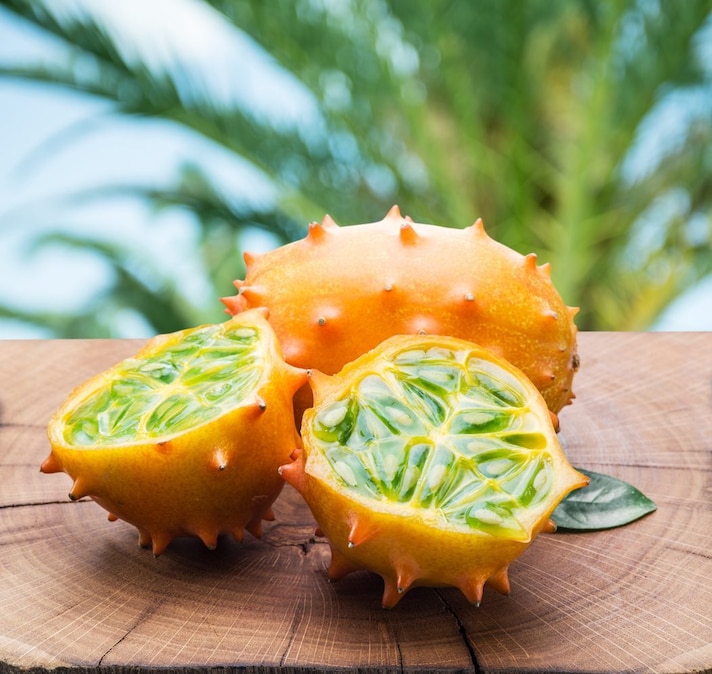
One of the exotic fruits that is slowly spreading to the U.S., we're talking about the horned melon, or kiwano, which grows in central and southern Africa. Its scientific name is Cucumis metuliferus, and it has a very thick orange rind covered in spiny protrusions. The inner pulp is a gelatinous substance filled with edible seeds ranging from lime green to yellow. In Africa, it's eaten (with the peel) after being roasted and boiled with vegetables. In our area, the horned melon pulp is used in salads, yogurt, or eaten plain, flavored with sugar and lemon. Its nutritional profile is excellent, low in calories and fat and packed with vitamins and antioxidants. Several studies highlight its ability to change the mood of those who eat it: containing high percentages of magnesium and zinc, these two minerals are involved in the production of neurotransmitters that influence mood.
9. Mangosteen

Mangosteen is the fruit of Garcinia mangostana, a species belonging to the Clusiaceae family. It grows in Thailand, Myanmar, and Sri Lanka, where it is exported worldwide, including the U.S.. It is considered a jewel among exotic fruits due to its incredible nutritional properties and health benefits. Useful for medicinal purposes, mangosteen is said to be beneficial in cases of diarrhea, urinary tract infections, gonorrhea, candidiasis, and menstrual problems. Aesthetically, it is a very beautiful and graceful fruit: spherical in shape, with a peel ranging from dark red, purple, and burgundy, it features petal-like protuberances. The internal pulp is milky white, divided into segments similar to those of an orange. When cut in half, a delicious but highly staining red juice comes out. Those who have tasted it have been won over, describing the flavor as floral, with vague hints of peach and pineapple. The pulp is juicy with an aroma reminiscent of jasmine or rose.
10. Pineberries
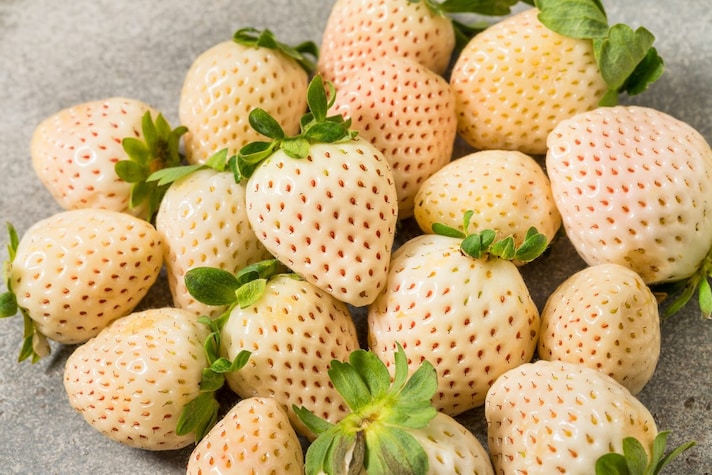
They look just like strawberries, but are white and have a very similar flavor to pineapple. Pineberries are one of the most interesting hybrids on the market and originate from South America, more specifically Chile. They are whiter than traditional strawberries thanks to the lower levels of the Fragria allergen A1 protein, which gives strawberries their typical red color (during ripening). A particularly interesting exotic fruit, they are a hybrid between two species, Fragaria chiloensis and Fragaria virginiana: they are called pineberries precisely because the name is a portmanteau of pineapple and strawberry. They are not very easy to purchase because they are considered rare and gourmet fruits, and it is possible to find them in more specialized shops or buy the seeds online.
;Resize,width=767;)
